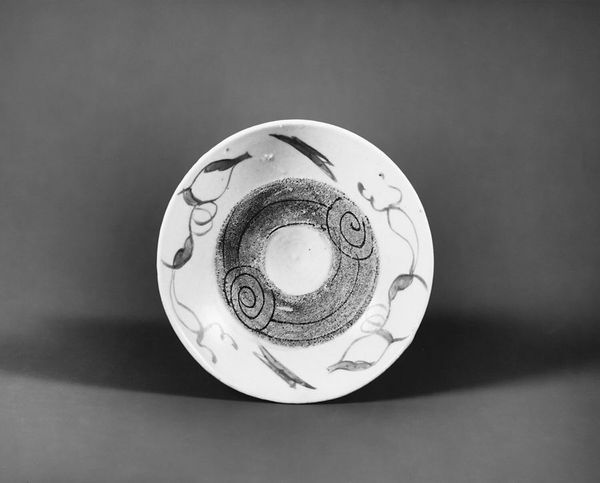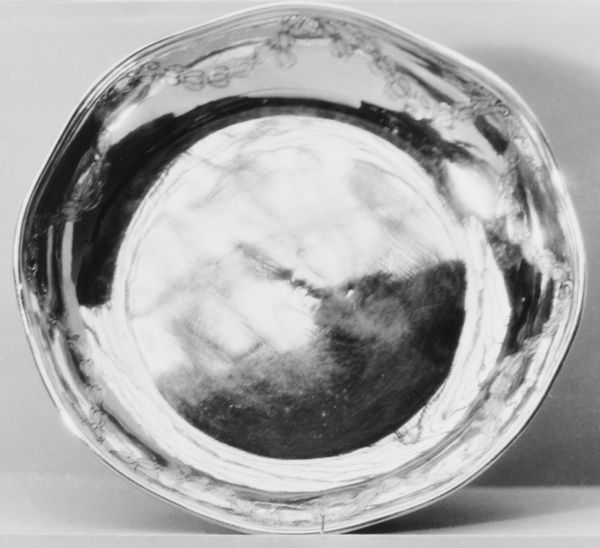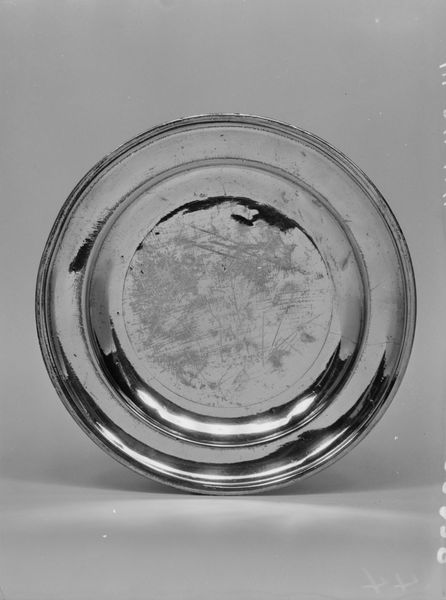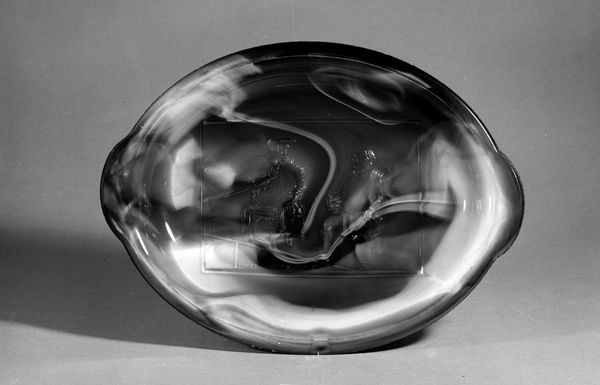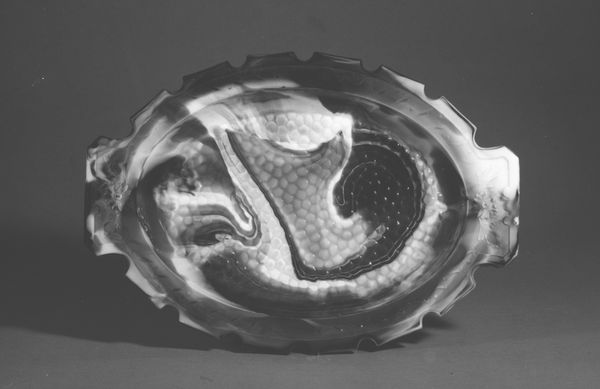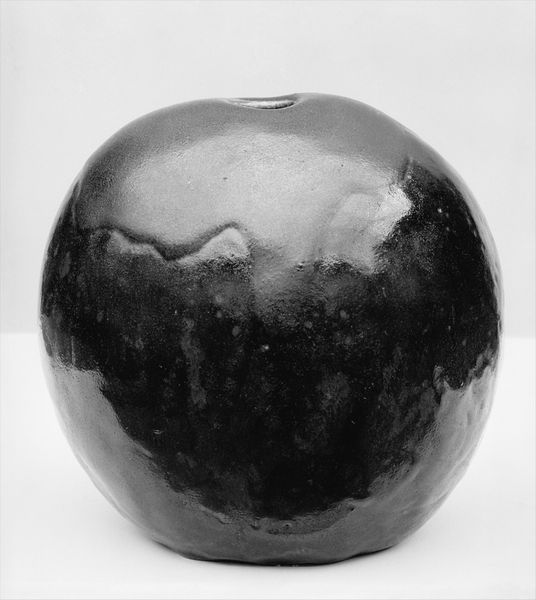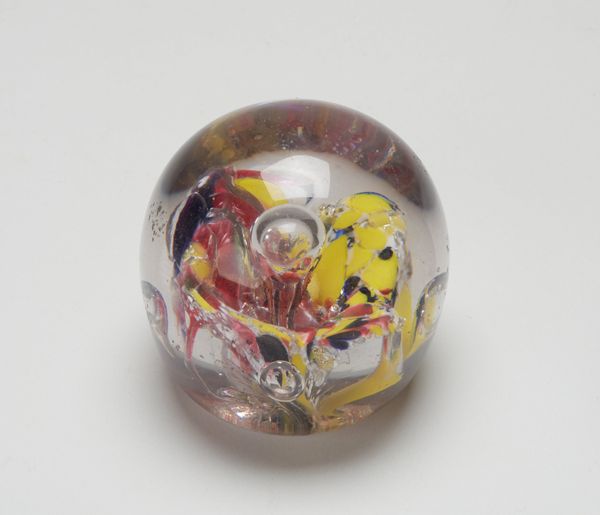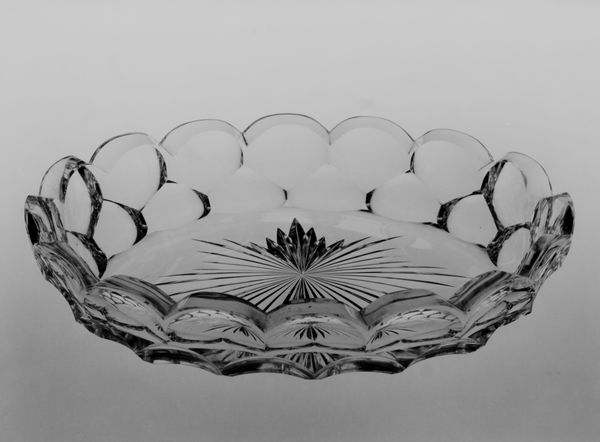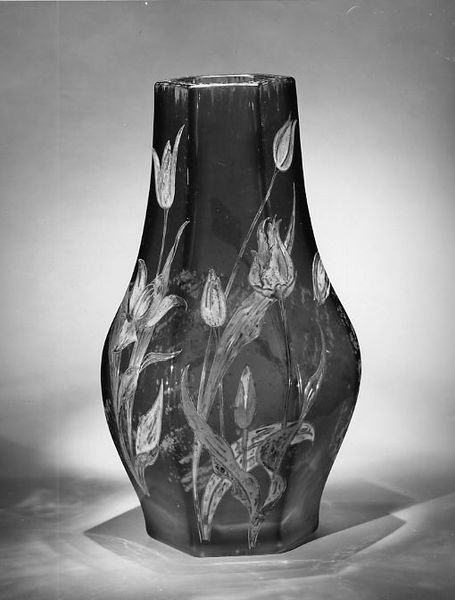
ceramic
#
asian-art
#
ceramic
Dimensions: H. 1 1/2 in. (3.8 cm); Diam. 3 1/4 in. (8.3 cm)
Copyright: Public Domain
This small wine cup was made in Japan sometime in the late 18th or early 19th century by the artist Aoki Mokubei. Mokubei was a prolific artist who worked in many styles, but was especially known for his ceramics produced for the Japanese tea ceremony. The fish painted inside the cup is an auspicious symbol, but the roughly-sketched style is quite unusual. Mokubei was associated with a Kyoto circle of literati artists who called themselves “bunjin.” They admired Chinese culture and cultivated an amateur, individualistic style of painting. Surviving records show that Mokubei collaborated with other artists and intellectuals in Kyoto, exchanging ideas and artworks. The cup is now preserved in the collection of the Metropolitan Museum, an institution that has played a key role in shaping the global understanding of Japanese art. To understand this object fully, we might research the history of the Japanese tea ceremony and the social role of the bunjin artists. In doing so, we see that even the simplest artwork reflects a complex moment in social and institutional history.
Comments
No comments
Be the first to comment and join the conversation on the ultimate creative platform.
